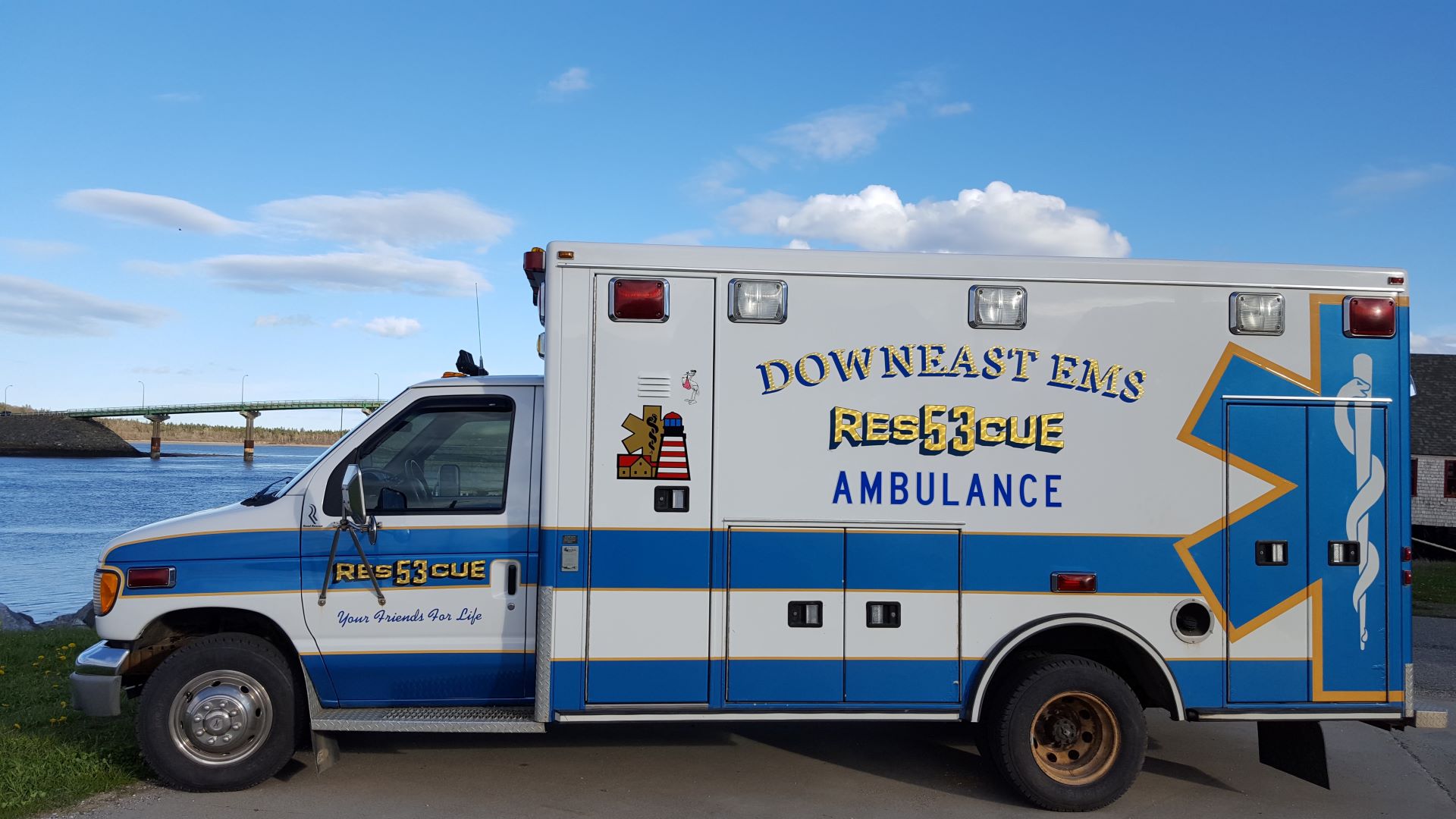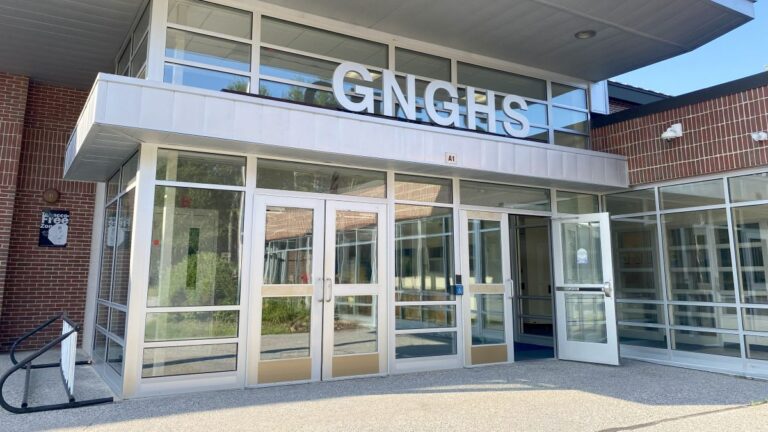As part of a larger budget deal, state legislators have approved $31 million in funding that will provide breathing room for the roughly 275 emergency medical services (EMS) statewide, some on the verge of collapse. The aid will be distributed in two batches, 40% possibly by October for emergency relief and 60% thereafter in the form of grants.
Renée Gray, the newly appointed Washington County manager and also the ambulance chief for Moosabec Ambulance Service in Jonesport-Beals, said the relief cannot come soon enough. One Washington County ambulance service closed earlier this year and others have merged due to low staffing and depleted revenues.
“The people that work in this field are problem solvers, and they’ll kill themselves trying to fix this problem. That’s basically what’s happened – EMS has finally revealed its holes,” Gray said.
The long-negotiated funding — EMS officials originally requested $70 million — got caught up in a legislative battle over a proposed budget addition to the governor’s $9.9 billion, two-year budget that was approved in March.
A blue-ribbon commission, formed last year to study the issue, made recommendations to the legislature. Rick Petrie, the interim executive director for Atlantic Partnership EMS, a statewide EMS collaborative, was a leading advocate in the effort to secure state funding.
“It’s not what we would have hoped because the blue-ribbon commission was pretty clear that EMS providers needed $70 million,’’ Petrie said. “OK, so we compromised, but now let’s turn this (money) out really quickly with very little red tape.”
How much red tape there might be is unknown because no further details about the allocations were announced. Also, the budget measure did not pass by a two-thirds majority that would have allowed it to go into effect immediately. The budget addition, which still needs the governor’s signature, passed 80-58 on Thursday in the House and by a 22-9 vote in the Senate.
Still, Petrie said approval of the funding indicates that lawmakers recognize providers are struggling and seem to understand that $31 million is merely a down payment toward building a better system.
Another promising sign, he said, is that the commission will reconvene, possibly this summer, to further assess EMS needs statewide.
House Speaker Rachel Talbot Ross in a statement agreed that access to emergency medical response services across Maine is an essential part of the state’s healthcare system that must be funded, although she did not say if that will be with continued state support.
“In some cases, it’s quite literally a life-or-death situation,” said Talbot Ross. “The funding in this budget will be a major step forward to help services stay open, attract new providers to the field and start the process of redefining what emergency medical services look like in Maine.”
The Maine Bureau of EMS, which operates within the Department of Public Safety, will be key in determining how the money is divided, according to Petrie. Maine EMS had urged lawmakers to support not only the emergency funding, but additional funds to assist EMS and ambulance services as they shift into new funding and operational models.
With few exceptions, EMS providers across all 16 counties have been largely, but inadequately, self-funded by low insurance reimbursements and small taxpayer contributions from individual cities and towns.
They are often staffed with underpaid EMTs, paramedics or volunteers.
Sam Hurley, the Maine EMS director, said that model is no longer sustainable. Although optimistic, Hurley agrees the devil is in the details.
“Maine EMS is excited that the governor’s office and Maine Legislature have identified the needs of the EMS system in Maine as a funding priority. That said, we too are anxiously awaiting the final action of the Legislature as to the specific language surrounding any funding introduced to the system,” Hurley said.
In May, Maine EMS released its 2035 EMS Vision & Plan, outlining what it sees as the steps needed to achieve true sustainability over the next 12 years for the state’s roughly 275 EMS providers that are operating at a loss or barely breaking even.
Many EMS providers are struggling due to a host of factors, including lagging reimbursement rates, recruitment and retention challenges, training, and an aging and rural population.
As a result, some services are routinely “out of service” when an ambulance can’t be fully staffed. Some other providers, such as Petit Manan in Washington County, which served Milbridge and Steuben, have ceased operations.
But it’s not only rural EMS providers that are suffering.
A University of Southern Maine national study released in May by the Maine Rural Health Research Center revealed that 15 of the 16 Maine counties have so-called ambulance deserts, where people are located more than 25 minutes from an ambulance station. In the Northeast, Maine was ranked as the second-worst ambulance desert state, behind only Vermont, where every county contains at least one.
Only Androscoggin County has an adequate number of ambulance stations to provide reliable, fast responses. Even higher-density counties such as Cumberland, encompassing Portland and its environs, and Penobscot, which includes Bangor, have pockets that lack adequate ambulance response times, according to the MRHRC geographic disparities study.
Petrie said he got a call this past week from the service chief for “a fairly large metropolitan department in the state,” saying they were drowning in overtime expenses trying to cover the increasing number of calls and mutual aid requests. Petrie said the money would be allocated to any EMS department providing 911 response that shows it needs help — even metropolitan departments.
He said that the situation in rural communities is even more dire. Petrie said he knows that in places like Washington County and Aroostook County — virtually anywhere north of Augusta — EMS departments are “barely there” and doing everything they can to hold on.
“This money will be a lifeline to them while we work out the longer term,” Petrie said.
He and other EMS officials said the solution is multi-pronged, requiring state assistance, better insurance reimbursements, realistic financial contributions from municipalities being served and a more regional approach, with fewer, more robust, strategically located providers.
That assessment was echoed by Yvonne Jonk, associate research professor at the University of Southern Maine and deputy director of the Maine Rural Health Research Center. Jonk, the lead researcher for the ambulance deserts study, said the data proves that regionalized services are needed, particularly in rural areas with large geographic footprints and low populations.
“With regionalization you’re able to triage and determine the optimal location of an ambulance service, and to have each other’s backs instead of all this ad hoc community goodwill,” Jonk said.
Slowly, EMS providers and municipalities are heeding that warning, organizing and financially supporting regional services such as the new Bold Coast EMS department in Washington County, pressed into a regional model out of necessity after the closure of Petit Manan and regular staffing shortages in the Cherryfield ambulance department.
Bold Coast EMS opened June 12 with an inter-local agreement between the towns of Cherryfield, Milbridge and Steuben, each paying an equal share of the roughly half million-dollar annual operating budget. The smaller outlying towns of Beddington and Dubois kick in a donation for their coverage.
Mariah Curtis, the former Cherryfield service chief who is also a full-time nurse, is service chief for the new consolidated ambulance department. She said they are entirely taxpayer funded and didn’t bank on getting any state support.
“We built it to be self-sufficient, just with our community supporting us, and they’re very receptive to that,” Curtis said. “We will be open and appreciate anything we can get that makes the burden less on our taxpayers, but we don’t need it to bail us out.”
Bold Coast employs four full-time people during the day and uses part-time, on-call EMTs at night. The pay is $20 an hour for an EMT with 100% employer-paid health insurance and a zero deductible policy, all of which Curtis said keeps morale high.
The regional service is the second of its kind in Washington County; the first was Downeast EMS, which serviced the far eastern half of the county, with nine ambulances out of bases in Baileyville, Lubec and Eastport. Answering about 1,900 calls last year, Downeast EMS has operated in the black for the past decade.
Regionalism advocates say the local examples show there is strength in numbers. Data presented to the blue ribbon commission showed that of ambulance services performing less than 1,800 calls per year, most run less than 500, losing roughly $2,000 per call, largely due to poor insurance reimbursements.
Seventy percent of all ambulance runs in Maine are paid for by Medicare or Mainecare. Those services only reimburse 85 percent of the cost.
But there also is a glimmer of hope on that front coming out of the Legislature. Private insurers will begin paying higher reimbursements, according to Petrie. He’s hopeful that the next session and the blue-ribbon commission will make changes to the government reimbursement rates as well. He said that is critical, especially in places like Washington County.
“I believe that the blue-ribbon commission coming together again will start to attack those issues, or start down that pathway,” Petrie said. “They are going to have to come up with a fairly significant, radical way to deliver EMS up there — and the hospitals need to be involved as well.”
Sign up for the Downeast Monitor, a free newsletter produced by The Maine Monitor, to stay informed of what’s happening in Washington County.







